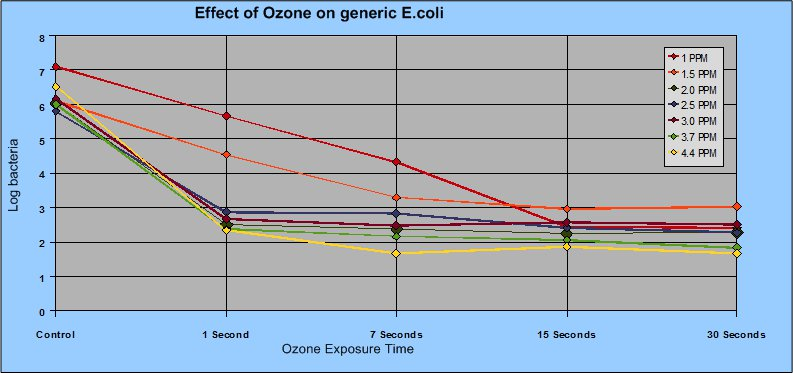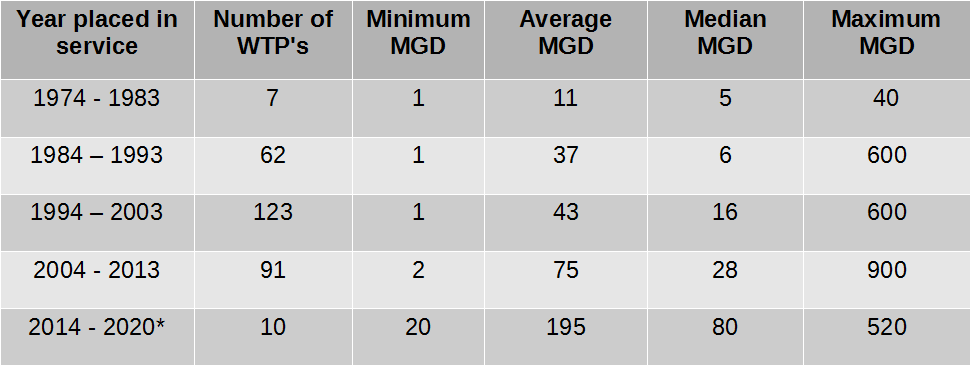E.coli Reduction with Ozone
The most common topic for discussion around workplace water coolers is not bacteria. However, there is a certain strain of bacteria that has generated a good amount of press and discussion. The strain of bacteria, E. coli O157:H7 has become popular in the media, which has caused many people to have a healthy fear of this bacteria.
Escherichia coli (E. coli) is a strain of bacteria that is commonly found in the intestines of animals and humans, and are known to be dangerous and can cause food borne illnesses. The strain of bacteria, E. coli O157:H7, can be life threatening and has resulted in an estimated 2,100 hospitalizations, and is one of the most dangerous strains of E. coli.
Many vegetables, meats and even water supply can contain this strain of E. coli. The biggest cause of infections from E. coli are from food borne illnesses like under cooked ground beef. However, some waterborne illnesses have been found as well. The Canadian town of Walkerton, Ontario had a municipal water supply contaminated by this strain of E. coli in May of 2000. As a result, the pathogen has been blamed for over 2,000 illnesses and 7 deaths.
Solutions to reduce food borne pathogens are becoming very rare. For example, in the past, chlorine has been widely used as a cheap and effective oxidizer to kill a variety of pathogens. However, chlorine is being used less and less as the side effects of the chemical are slowly becoming more apparent. Other chemicals such as methyl bromide, chlorine dioxide, and sodium hypochlorite, that have been used to combat pathogens in the past are also being used less because of the awareness of side-effects.
Ozone is found to be a new and effective method of antimicrobial intervention. In certain industries, such as drinking water, food processing, and surface sanitation, ozone is becoming very popular. Ozone has been proven to be an effective disinfectant against many different pathogens, but studies needed to be conducted in order to prove it was useful against this particular strain of E. coli O157:H7. After research was conducted, it was proven that ozone is effective against this strain of E. coli.
Below is an excerpt from the Direct food additive Petition presented to the FDA in August 2000 to achieve GRAS status for the use of ozone to inactivate E. coli O157:H7, along with other pathogens.
Implementation of Ozone
Aqueous Ozone
The most common method of using ozone for pathogen reduction is dissolving ozone into water. Aqueous ozone is very stable, safe, and easy to manage. Typically, ozone is dissolved into water using an ozone injection system, and then sprayed onto the surface requiring disinfection. This surface may be a hard equipment surface, or the surface of a food product.
Ozone levels of 2.0 ppm are commonly used for E. coli O157:H7 reduction. Only a few seconds of contact time of the aqueous ozone with the pathogen is necessary for inactivation. See chart below.
Using this data, a determination of spray nozzles, spray bars, or even conveyers can be established. It is clearly shown that 2.0 ppm of aqueous ozone is very effective in only a short period of time, while higher ozone levels show only marginal improvement.
Ozone can be used in drinking water to inactivate E. coli O157:H7. This has been confirmed by the EPA and recognized as a suitable disinfectant for water.
Gaseous Ozone
The use of gaseous ozone for the elimination of pathogens is less common. There is also less research showing the effects of gaseous ozone on bacteria. The application of gaseous ozone is dependent upon the temperature, humidity, contact time, and ozone levels. Research has been conducted to determine that gaseous ozone will reduce and inactivate E. coli O157:H7, however more research is necessary to determine the effectiveness of ozone within different variables.


